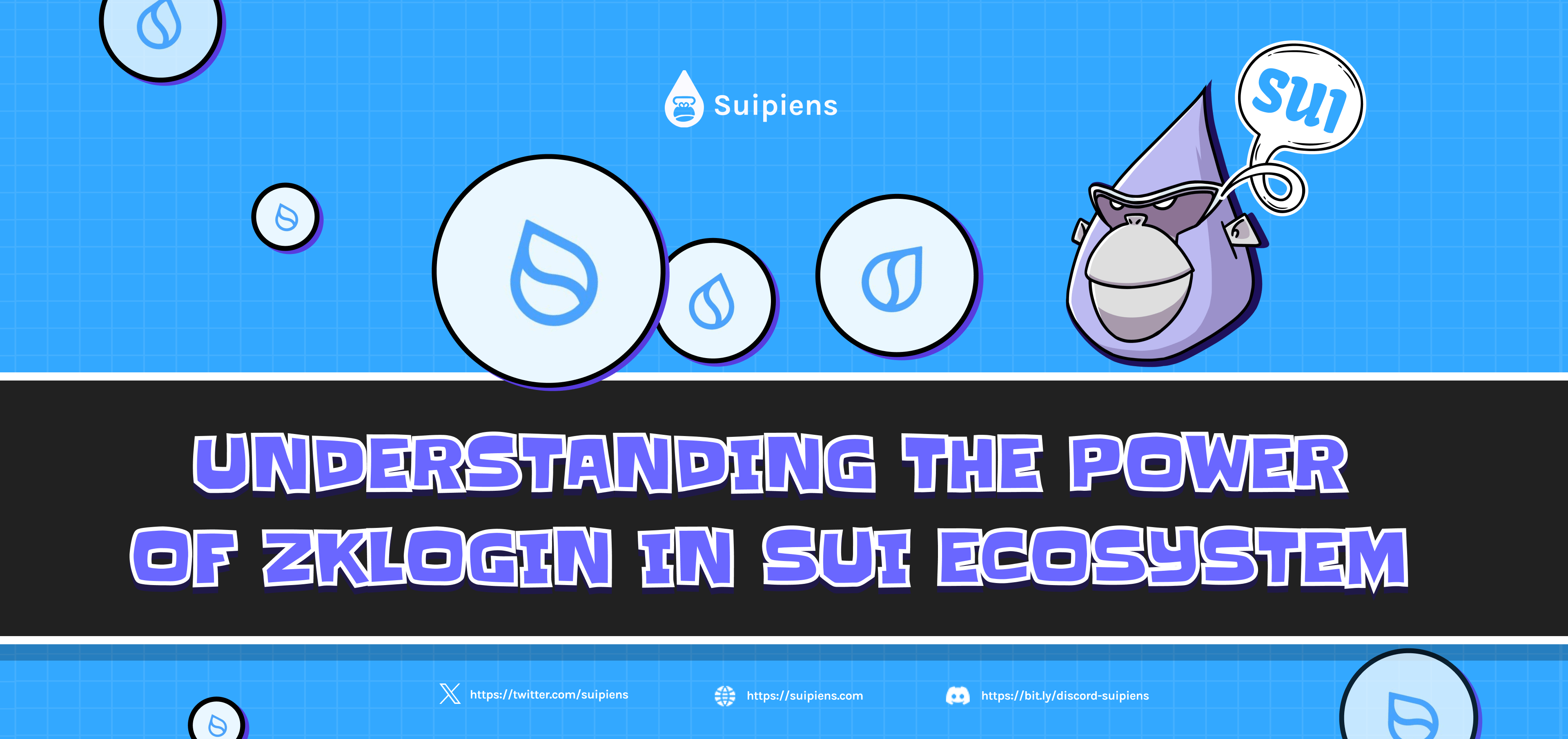Understanding the Power of zkLogin in Sui Ecosystem

Learn how zkLogin enhances security and simplifies blockchain access, allowing users to seamlessly authenticate using their familiar OAuth credentials.
Blockchain technology has revolutionized the way we handle digital transactions, but it hasn't been without its challenges. The complex nature of blockchain wallets and the onboarding process has often deterred new users. However, with the introduction of zkLogin, the authentication process has been streamlined, providing a seamless experience for users. Let's explore how zkLogin works, its security considerations, and its unique integration within the Sui ecosystem.
Understanding the Mechanics of zkLogin
The key innovation behind zkLogin lies in its ability to create a unique Sui address for each OAuth credential + app combination. This means that a single OAuth credential can manage multiple independent addresses for different apps. For instance, a single Google account connected to two decentralized exchange apps would have two distinct Sui addresses, each specific to the respective app.
Unlike traditional blockchain addresses that utilize a persistent public-private key pair, zkLogin employs temporary key pairs that require regular regeneration through an OAuth login flow. The unique identifier obtained from the OAuth provider's returned payload, known as the "key claim," is used to derive Sui addresses. This allows the addresses to remain fixed while the associated key pairs can be changed, ensuring enhanced security and flexibility.
Demystifying the zkLogin Process
The zkLogin process involves six sequential steps:
Step 1: Generating ephemeral keys
The app generates temporary key pairs for the user upon opening the application, with an expiration period dictating the login frequency.
Step 2: Generating a JSON Web Token (JWT)
Users authenticate themselves through an OAuth provider, resulting in a JWT that includes a nonce field, encompassing the public key and an expiration period.
Step 3: Requesting the user's unique salt
The salt, combined with the JWT and ephemeral key pair, associates the OAuth credentials with the Sui address. Different salt management options exist, including an SSO-style salt management option and user-managed salt.
Step 4: Generating a zk proof
The process requests a zero-knowledge proof from a zk proving service, ensuring the accuracy of the request and elements such as the nonce, key claim, address, and OAuth provider's signature.
Step 5: Identifying the user's Sui address and constructing the transaction
The application identifies the user's Sui address based on the user salt and key claim, endorsing a transaction using the private key, zk proof, and JWT inputs.
Step 6: Validating the transaction
Sui validators meticulously scrutinize the zk proof and ephemeral signature for authentication, confirming the transaction's legitimacy on the blockchain.

Ensuring Robust Security Measures
While zkLogin simplifies the login process using OAuth credentials, it's crucial for users to prioritize the security of their accounts. Implementing two-factor authentication (2FA) and following security best practices, such as using secure passwords, is highly recommended. Furthermore, safeguarding the salt value is imperative for builders, as it serves as a vital link between users' Web2 and Web3 credentials.
Sui's Unique Positioning for zkLogin Sui's adaptability and design allow for seamless integration of zkLogin, setting it apart from other blockchains. Unlike those that support only one cryptographic authentication method, Sui facilitates various cryptographic schemes, eliminating additional gas costs for transaction execution. By representing JWKs as Sui objects and employing Sui validators as oracles, zkLogin ensures enhanced security and reliability in the authentication process.
Looking Ahead with zkLogin
As zkLogin debuts on mainnet, the future holds promise with the integration of additional OAuth providers and expanded functionalities. This significant milestone in the Sui ecosystem marks the beginning of a transformative journey. With endless possibilities ahead, zkLogin is set to revolutionize the way users access blockchain technology, paving the way for a more secure and accessible future.
For detailed information on integrating zkLogin into your application, visit the zkLogin documentation for comprehensive guidance.
Be sure to check out Suipiens' website and social media channels to stay up-to-date on all things about Sui Blockchain!

